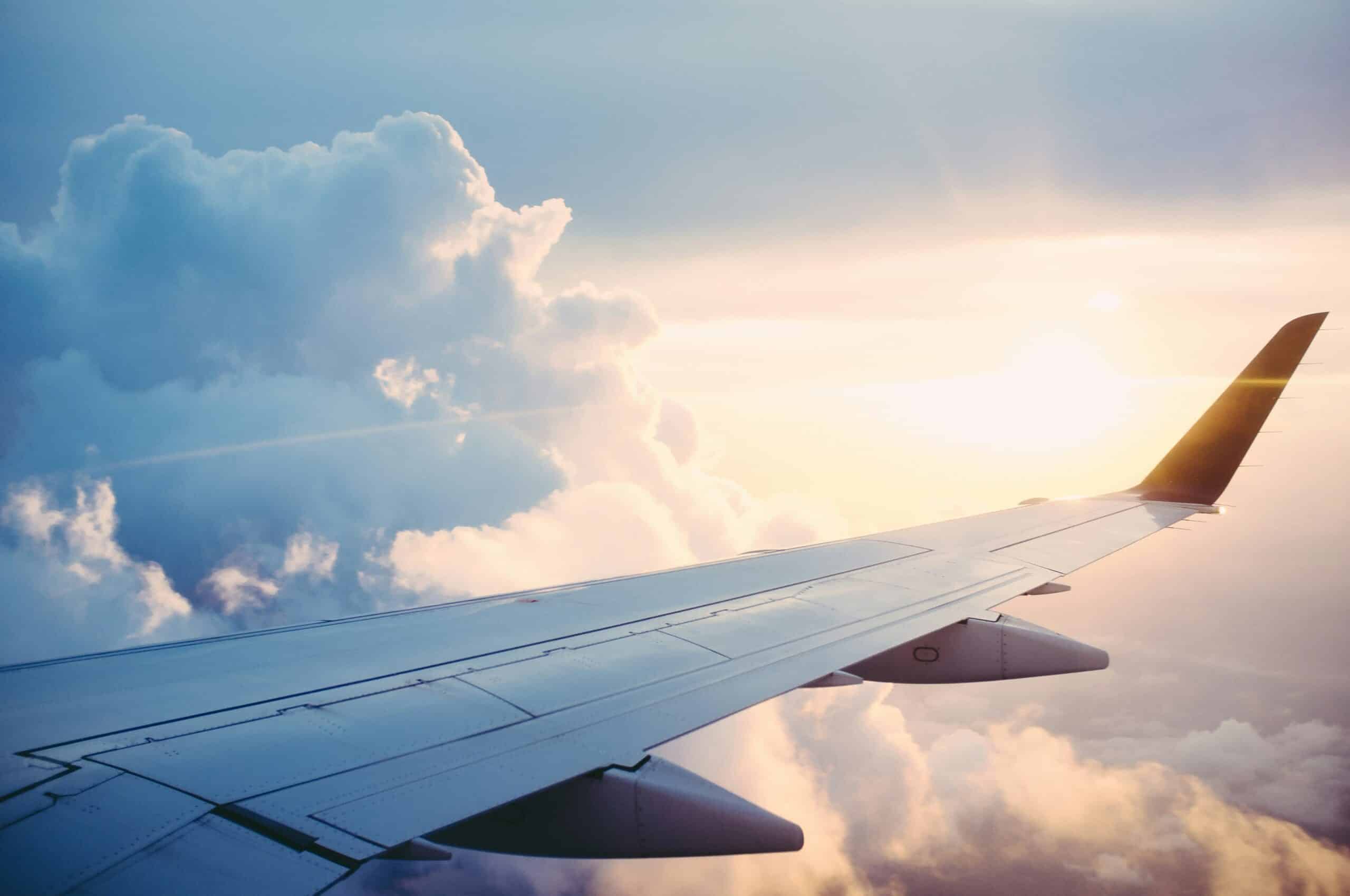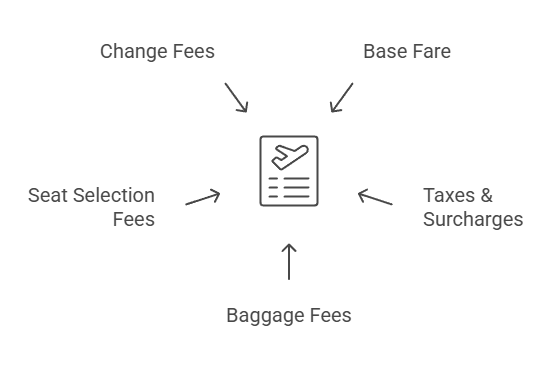
If you’ve ever found a great flight price, hesitated for a few hours, and returned to see the price skyrocket, you’re not alone. Airline pricing can feel like a chaotic, unpredictable game, but in reality, it’s a well-calculated strategy that follows clear patterns.
Every airline, from budget carriers to premium international operators, uses a complex pricing system influenced by supply and demand, competition, seasonal trends, and advanced algorithms. Flight prices can fluctuate by the hour—or even the minute—leaving travelers confused and frustrated.
So, what’s really happening behind the scenes? How do airlines determine flight prices, and more importantly, how can you take advantage of this system to find the best deals? Let’s break it all down.
Explore our latest articles to find your next destination !
Latest Articles
What Determines Flight Prices? The Hidden Factors Airlines Use

Understanding airfare pricing starts with knowing the key factors airlines consider when setting ticket costs. These variables work together to determine how much you pay for your seat—sometimes resulting in drastic price swings within just a few hours.
✈ How Supply and Demand Control Airfare
At its core, airline pricing follows the basic principles of supply and demand. When demand for a flight is high, airlines increase prices to maximize profits. Conversely, when demand is low, they drop fares to attract more passengers.
For example, flights to popular vacation destinations like Hawaii or Paris tend to be more expensive during peak travel seasons—think summer, Christmas, and spring break—because demand surges. On the other hand, flights to less-visited locations or during off-peak months are often much cheaper because airlines need to fill seats.
➤ Transitioning to our next key factor, the time of year plays a huge role in how airlines set prices.
🌍 When Travel Seasons Impact Your Ticket Cost
Seasonality is another major player in airfare pricing. Certain times of the year are universally more expensive due to increased travel activity, while other periods see much lower fares.
For instance, if you’re planning a trip to Europe, flying in September or October will likely be much cheaper than in July or August because fewer people are traveling.
➤ Now, let’s look at how airline competition affects ticket prices.
⚖ Why Competition Between Airlines Affects Your Fare
Not all flights are priced equally, even if they cover the same route. When multiple airlines operate in the same market, prices tend to stay lower because companies compete for passengers.
For example:
- On a popular route like New York to Los Angeles, where multiple airlines (United, Delta, American, JetBlue) operate, fares are relatively competitive.
- But for routes with fewer operators, such as a small regional airport to a major hub, prices remain high due to limited competition.
Budget airlines like Ryanair and Spirit also force traditional airlines to lower fares by offering ultra-cheap base fares and charging for add-ons like seat selection and baggage.
➤ Speaking of pricing fluctuations, the biggest factor affecting fares in real-time is airline algorithms. Let’s explore how they work.
How Do Airlines Use Algorithms to Change Prices in Real-Time?

Have you ever checked a flight, returned an hour later, and found the price had jumped by $50? That’s not random—it’s the result of dynamic pricing algorithms.
📊 How Dynamic Pricing Works
Modern airline pricing is not set in stone. Instead, fares are adjusted dynamically based on real-time booking data, browsing history, and demand predictions. Here’s how it works:
- When a flight first becomes available, airlines release a few seats at a low fare.
- As more tickets are sold, the system raises prices for the remaining seats.
- If a flight is selling slower than expected, airlines might drop prices temporarily to attract bookings.
- If a sudden spike in searches suggests increased demand (such as an event announcement), airlines may increase prices immediately.
Another hidden factor? Your browsing history. Some travelers report seeing higher prices if they repeatedly check the same flight using the same device. While airlines deny personalized pricing, clearing your cookies or using incognito mode might help avoid potential price hikes.
➤ Now that we understand base fares, let’s uncover the additional fees that airlines sneak into your ticket price.
What Are Airlines Hiding? The Truth About Extra Fees

Think you found a cheap flight? Look again. Many airlines lure passengers in with low base fares, only to add hidden fees that significantly increase the final cost.
Where Airlines Make Extra Money
✔ Baggage Fees – Some budget airlines now even charge for carry-on bags!
✔ Seat Selection – Want to pick your seat? That’s an extra charge.
✔ Fuel Surcharges & Taxes – Sometimes hidden until checkout.
✔ Change & Cancellation Fees – Can be steep unless you booked a flexible fare.
For budget airlines like Ryanair or Spirit, the ticket price might seem shockingly cheap, but by the time you add baggage, seat selection, and priority boarding, you could end up paying more than a full-service airline ticket.
➤ With all these fees in mind, how can you actually save money on flights? Let’s go over smart booking strategies.
When Should You Book? Smart Strategies to Find Cheaper Flights

Since airfare pricing follows structured trends, knowing when to book and when to fly can save you hundreds of dollars.
When to Book for the Best Deals
✔ Domestic Flights: 1-3 months in advance.
✔ International Flights: 3-6 months in advance.
✔ Last-Minute Bookings: Risky—prices usually spike, except for rare cases when airlines need to fill seats.
What Days Are Cheapest to Fly?
- Tuesdays & Wednesdays often have the lowest fares.
- Fridays & Sundays are the most expensive due to high demand.
- Early morning and red-eye flights tend to be cheaper than afternoon or evening departures.
Where to Search for Deals
- Use Google Flights, Skyscanner, and Kayak to compare fares.
- Sign up for price alerts to track fare drops.
- Be flexible—sometimes flying into a nearby airport can save you money.
➤ With these strategies, you can outsmart airline pricing systems and book your flights at the best possible rates.
Conclusion: What You Need to Know Before Booking Your Next Flight

Flight pricing might seem unpredictable, but understanding how airlines set fares gives you a major advantage. The key takeaways?
✔ Airfare is determined by supply, demand, and seasonality.
✔ Airlines use AI-powered pricing algorithms to adjust fares constantly.
✔ Hidden fees can inflate your ticket cost, so always check the fine print.
✔ Booking early, being flexible, and using flight comparison tools can help you score the best deals.
Next time you’re searching for flights, use these insights to stay ahead of airline pricing tricks and save big on your travels!